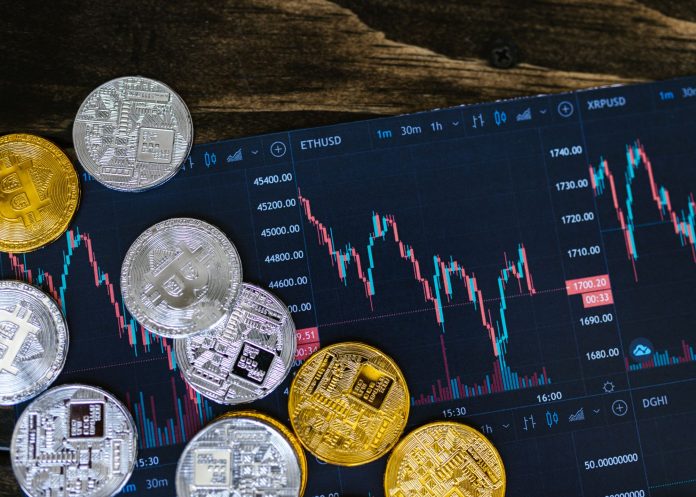
Why is Bitcoin down now and what are the prospects for a recovery in the future? Unlike other asset classes, cryptocurrencies do not exist in physical form. They generate no dividends or interest like stocks or bonds, have no base tangible value like precious metals and have no central bank to maintain their value like sovereign currencies. But believers in this digital currency are undeterred.
Cryptocurrency has a history of coming back from the newest low point to create an even higher high price. Will that happen again? While there is inflation and higher interest rates, it seems unlikely. Bitcoin versus gold is a subject that’s hotly debated and will continue into the future.
Cryptocurrency Beginnings
A cryptocurrency is a digital form of currency. The data behind a digital currency is typically stored in a digital ledger that is stored on a blockchain. A blockchain is a list of records that are called blocks and they are all linked together. These blocks indicate ownership, and this is how transactions of buying or selling are recorded. These transactions are recorded and stored in these digital ledgers. You cannot change the data in one block without changing the data in all the blocks linked to it, so these transactions are considered safe and provable.
The first decentralized blockchain didn’t take form until 2008 when a way to timestamp these blocks with transactions and information was developed. In 2009, the Bitcoin network was developed, and it wasn’t until 2010 that the first actual transaction took place. Bitcoins at that time had little to no value and were more of a theoretical novelty than a digital currency.
Becoming More Widespread
While this may have started innocently, by 2012, more than 1,000 merchants were willing to trade their goods or services for Bitcoins. In 2013, the digital payment processing company, Coinbase, reported selling more than $1 million worth of Bitcoins in a single month at the value of $22 each. Cryptocurrencies were off to the races with more new currencies being created daily. Currently, more than 9,000 different cryptocurrencies are available in the marketplace, and more than 70 of them have a $1 billion or higher market capitalization.
Highs & Lows
In 2020 and 2021, Bitcoin started at nearly $10,000 in value. It raced up to $70,000 and fell back down to under $20,000. That is a roller coaster ride that many investors do not want to take. But a large number of investors still believe in cryptocurrency in general and in Bitcoin specifically.
In March 2020, the price of Bitcoin fell from a little over $10,000 to under $5,000. By July it had recovered all of its losses. As 2020 ended, Bitcoin had reached a new all-time high of $19,850. Buoyed by the general recovery in the economy, Bitcoin rose to $41,973 in January 2021 and surged again in February when Tesla announced it would accept Bitcoins as payment on vehicles and that the company was investing in Bitcoins. By April 2021, Bitcoin’s price was over $60,000 and it seemed nothing could stop cryptocurrency prices. The crypto market was white hot!
China Bans Cryptocurrency
A month later, China banned all cryptocurrency trading services and ownership of cryptocurrency, freezing a large potential market. Tesla then stopped accepting cryptocurrency. The cryptocurrency Tera-LUNA crashed, forcing Bitcoin below $30,000. In June, a cryptocurrency lender, Celsius Network, froze all transactions, and the cryptocurrency market dropped another 25%. At the end of June, there was still more bad news as the crypto-backed hedge fund, Three Arrows Capital, defaulted on a Bitcoin loan and was ordered into liquidation.
Permanent Losses?
All of these losses and volatility issues have caught the attention of both lawmakers and regulators in Washington. Do the cryptocurrency markets need regulation to make them safer for investors? The Biden administration has ordered government agencies to study the development of digital assets and how to respond to digital developments worldwide. No one knows what the future may hold, but we do know about responsible investing.
The fact that prices have always previously recovered and gone to new highs is remarkable, but it isn’t assured. Most pundits advise you to only invest with assets that you can afford to lose. It makes good financial sense to remember the Wall Street caveat that past performance is no guarantee of future results.
This digital trends column about cryptocurrency previously appeared in COINage magazine. To subscribe click here. Column by Mike Garofalo.












